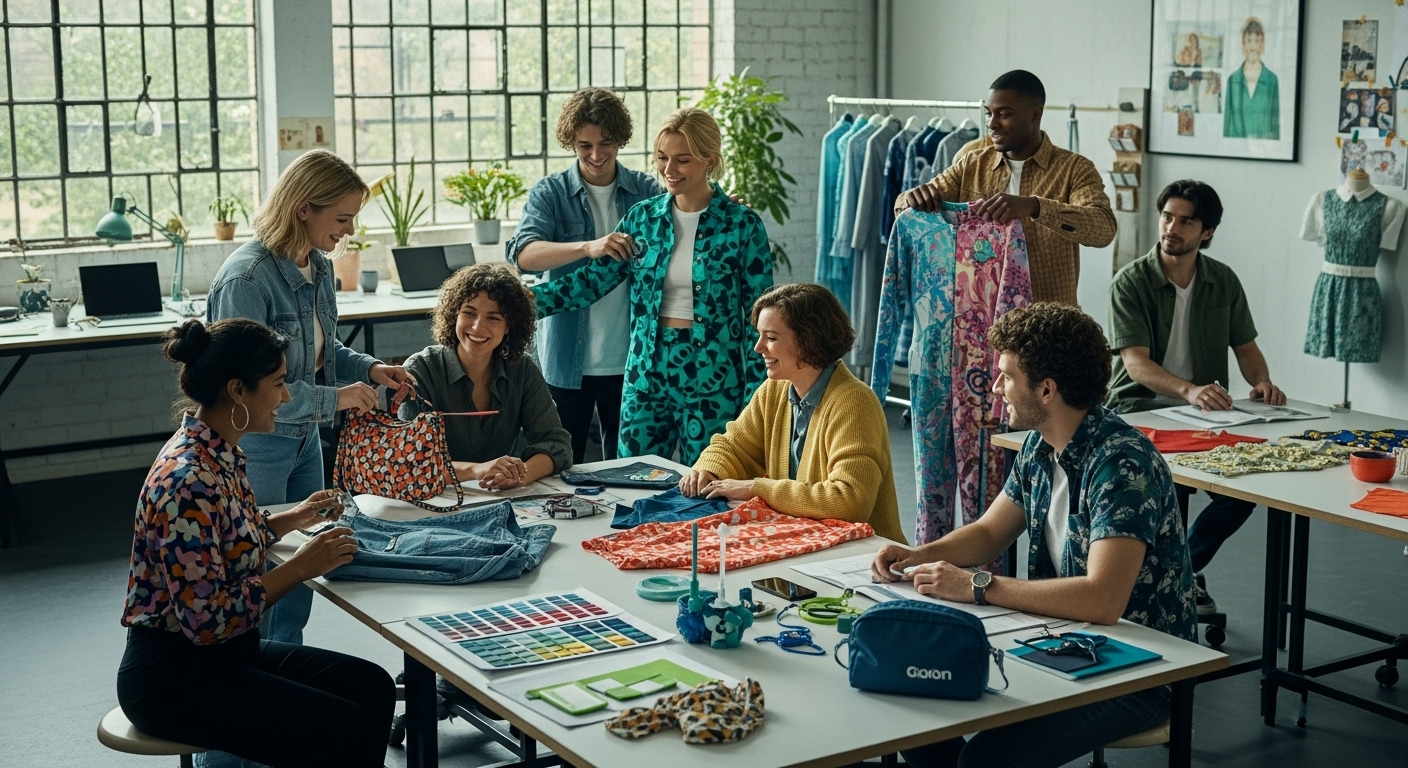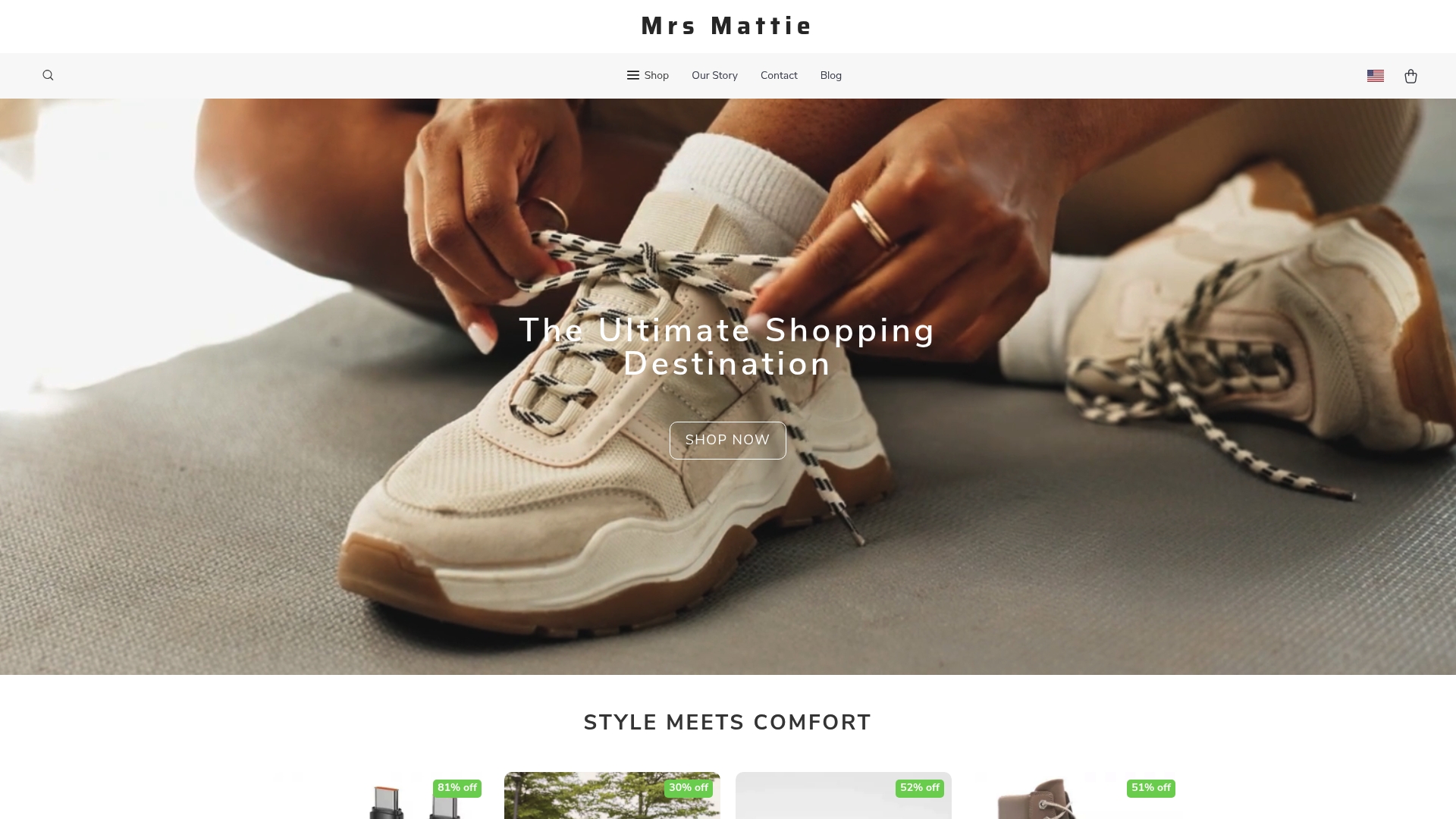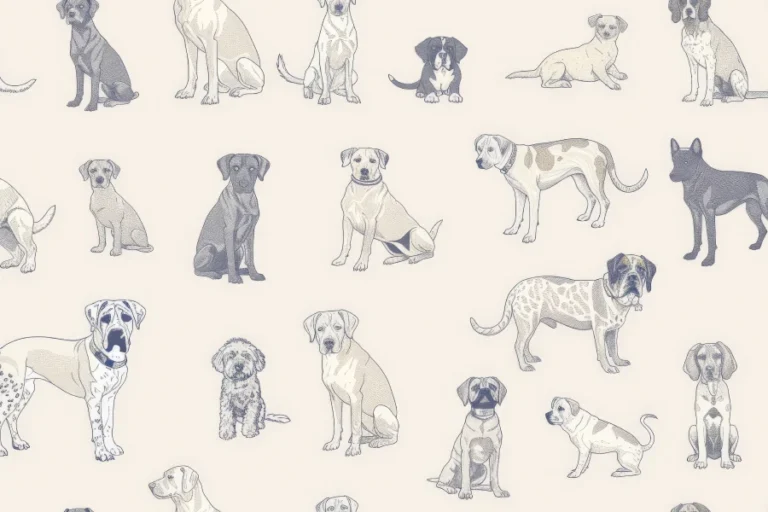-
Shop
- Advanced Technologies
- Arts, Crafts & Hobbies
- Back to School
- Bathroom
- Best-Sellers
- Car Accessories
- Clothing
- Dating & Social Skills
- Digital Resources
- Budgeting & Saving
- Dating & Social Confidence
- Emotional Intelligence
- Entrepreneurship & Business Growth
- Financial Independence
- Financial Mindset & Psychology
- Goal Setting
- Halloween Digital Collection
- Kitchen & Cooking
- Leadership
- Mindfulness
- Motivation
- Nutrition & Healthy Eating
- Positive Thinking
- Productivity
- Self Confidence
- Sleep Improvement
- Smart Amazon Shopping
- Stress Management & Relaxation
- Wellness & Self-Care
- Yoga & Mind-Body Practices
- Education & Learning
- Family & Parenting
- Fashion
- Alexander McQueen
- Bags
- Bags & Wallets
- Balenciaga
- Belts
- Blazers
- Blouses & Shirts
- Bottega Veneta
- Brunello Cucinelli
- Burberry
- Chanel
- Chloé
- Dior
- Dolce & Gabbana
- Dresses
- Etro
- Fendi
- Gucci
- Hats & Hair Accessories
- Hoodies & Sweatshirts
- Jacquemus
- Jewelry
- Jil Sander
- Jimmy Choo
- Keychains
- Kiton
- Luggage
- Luggage Bags
- Men's Fashion
- Miu Miu
- Off-White
- Outerwear
- Prada
- Rick Owens
- Saint Laurent
- Shoe Accessories
- Shoes
- Skirts
- Socks & Tights
- Sunglasses
- Sweaters & Cardigans
- The Row
- Tom Ford
- Tops & Shirts
- Valentino
- Valentino Garavani
- Versace
- Vivienne Westwood
- Watches
- Fashion Accessories
- Furniture
- Gadgets
- Health & Beauty
- Health & Wellness
- Home & Garden
- Home Supplies
- Kids & Babies
- Kitchen
- Lighting
- Nike
- Patio, Lawn & Garden
- Personal Growth
- Personal Style & Fashion
- Pet Care
- Pet Supplies
- Pets
- Sport & Outdoors
- Super Deals
- TikTok Growth & Monetization Mastery
- Travel
- Wealth
- Wealth Building
- YouTube Shorts Best-Sellers
8 Fashion Trends to Watch for in 2025

Fashion in 2025 is pushing boundaries everywhere you look, with trends moving faster and wilder than ever. Nostalgic styles like Y2K and 90s fashion are making a major comeback, while high-tech fabrics can now actually track your health. But here’s the surprise: what used to be bold or unusual is now becoming the new normal, as sustainability and gender-neutral wardrobes reshape how people pick their clothes. The hottest trend is personal expression that breaks every old rule—and this year, fashion is less about following the crowd and more about standing out in your own way.
Table of Contents
- Embracing Sustainable Fabrics
- Nostalgic Styles Making A Comeback
- The Rise Of Tech-Integrated Fashion
- Gender-Neutral Clothing Trends
- Bold Colors And Unique Patterns
- Versatile Clothing For All Occasions
- Accessories That Elevate Your Style
- Shopping Tips For Staying Ahead In Fashion
Quick Summary
| Takeaway | Explanation |
|---|---|
| Sustainable fabrics are mainstream by 2025 | Expect clothing made from regenerative cotton, biofabricated textiles, and recycled ocean plastic. This shift prioritizes quality and environmental responsibility. |
| Nostalgic styles are reimagined for today | Fashion blends nostalgic elements like Y2K and 90s styles with modern innovations, offering fresh takes on classic looks suitable for all generations. |
| Technology enhances fashion functionality | Smart textiles now track health, adapt to surroundings, and personalize wearables, making clothing a responsive part of personal technology. |
| Gender-neutral clothing promotes inclusivity | This trend encourages fluidity in fashion, allowing individuals to express themselves beyond traditional gender norms and societal restrictions. |
| Invest in versatile, sustainable wardrobe pieces | Prioritize high-quality, adaptable items from ethical brands to align personal style with sustainable practices and conscious consumption. |
1: Embracing Sustainable Fabrics
The fashion industry is undergoing a significant transformation, with sustainability becoming more than just a trend. By 2025, sustainable fabrics will move from niche to mainstream, revolutionizing how we think about clothing production and consumption.
According to Yale University’s Moving the Needle initiative, innovative approaches are reshaping textile manufacturing. Designers and brands are now prioritizing materials that minimize environmental impact while maintaining high aesthetic and performance standards.
Key sustainable fabric trends emerging in 2025 include:
- Regenerative cotton that actively improves soil health
- Biofabricated textiles grown from microorganisms
- Recycled ocean plastic transformed into high-performance clothing
These materials represent more than ecological responsibility. They signal a profound shift in consumer expectations, where quality, sustainability, and ethical production are interconnected. Consumers increasingly demand transparency about fabric origins, manufacturing processes, and environmental footprints.
Technological advancements are making sustainable fabrics more accessible. Innovations like advanced textile recycling techniques are enabling manufacturers to create premium clothing with significantly reduced environmental impact.
The future of fashion is not just about looking good, but feeling good about the choices we make. Sustainable fabrics represent a commitment to responsible consumption, offering consumers stylish alternatives that respect both personal aesthetic and planetary health.
2: Nostalgic Styles Making a Comeback
Fashion in 2025 is experiencing a remarkable revival of nostalgic styles, blending memories with modern innovation. The trend transcends mere repetition, transforming classic looks into contemporary statements that resonate with multiple generations.
According to research from Fashion ABC, the upcoming year will see a significant resurgence of retro aesthetics with a futuristic twist. Y2K and 90s fashion are leading this nostalgic wave, reimagining iconic looks through a sophisticated lens.
Key nostalgic styles making a comeback include:
- Cargo pants with sleek metallic finishes
- Oversized flannel shirts featuring iridescent threads
- Denim jackets incorporating subtle technological accents
These reimagined classics are not simply about recreating past looks, but about reinterpreting cultural memories through modern design sensibilities. Designers are carefully balancing authenticity with contemporary functionality, creating pieces that feel both familiar and innovative.
Chunky vintage earrings exemplify this trend perfectly, transforming retro accessories into statement pieces that bridge generational style preferences. The revival is driven by a desire to connect with past aesthetic expressions while simultaneously pushing fashion boundaries.
Ultimately, these nostalgic styles represent more than fashion trends. They are a form of cultural storytelling, allowing individuals to express personal narratives through carefully curated clothing choices that celebrate both historical and contemporary design aesthetics.
3: The Rise of Tech-Integrated Fashion
Technology is revolutionizing fashion in 2025, transforming clothing from passive accessories to active, intelligent systems that interact with our environment and personal needs. Smart textiles are no longer a futuristic concept but an emerging reality that blends functionality with style.
According to recent wearable technology research, clothing is becoming an extension of our digital ecosystem. Garments are now designed to do much more than simply cover our bodies they monitor health metrics, adapt to environmental conditions, and provide unprecedented levels of personalization.
Key technological fashion innovations include:
- Biometric sensing fabrics that track physiological data
- Clothing with adaptive temperature regulation
- Self-cleaning materials that reduce laundry requirements
The integration goes beyond simple utility. Designers are creating narratives where technology enhances personal expression. Imagine jackets that change color based on mood, shoes that adjust cushioning during different activities, or shoes that track fitness performance with unprecedented precision.
This technological convergence represents more than a trend. It signals a fundamental reimagining of what clothing can be: intelligent, responsive, and deeply personalized. Consumers are no longer passive recipients of fashion but active participants in a dynamic, interactive wardrobe ecosystem.
The future of fashion is not just about looking good, but about clothing that understands, adapts, and responds to individual needs in real time. Tech-integrated fashion is bridging the gap between personal technology and personal style, creating a new paradigm of wearable innovation.
4: Gender-Neutral Clothing Trends
The fashion landscape of 2025 is experiencing a profound transformation with gender-neutral clothing emerging as a powerful movement that transcends traditional fashion boundaries. This trend represents more than a style choice it signifies a broader social evolution toward inclusivity and personal expression.
According to groundbreaking research in the Journal of Education, Humanities and Social Sciences, gender-neutral fashion challenges established societal norms and promotes greater understanding across diverse communities. The movement is driven by younger generations who view clothing as a form of individual identity rather than a restrictive categorical system.
Key characteristics of gender-neutral fashion include:
- Fluid silhouettes that do not conform to traditional gender shapes
- Neutral color palettes emphasizing versatility
- Designs that prioritize comfort and personal expression
Designers are responding by creating collections that blur conventional gender lines. Trending sneakers for women now feature designs that appeal across gender spectrums, demonstrating how fashion is becoming increasingly inclusive.
The psychological impact of gender-neutral clothing extends beyond aesthetics. By removing restrictive fashion norms, individuals can express themselves more authentically, challenging long-standing societal expectations about appearance and identity.
This trend reflects a broader cultural shift towards recognizing gender as a complex, multidimensional concept. Fashion is no longer about fitting into predefined categories, but about celebrating individual uniqueness and personal style freedom.
5: Bold Colors and Unique Patterns
Fashion in 2025 is breaking free from subdued color palettes, embracing vibrant expressions that challenge traditional design norms. Colors and patterns are becoming powerful tools of personal storytelling, transforming clothing from mere fabric into dynamic visual statements.
According to Oregon State University’s Nexus blog, the upcoming year will witness an extraordinary blend of bold animal prints, abstract art influences, and unexpected color combinations that redefine aesthetic boundaries.
Key characteristics of this color and pattern revolution include:
- Unconventional animal prints in non-traditional color schemes
- Abstract geometric patterns merged with organic elements
- Layered color blocking with unexpected chromatic relationships
Designers are moving beyond conventional color theory, creating visual narratives that challenge perception. Imagine leopard prints in electric blue, zebra stripes overlaid with watercolor gradients, or camouflage patterns reimagined through a surrealist lens.
Trending shoes for women are also embracing this bold aesthetic, featuring designs that incorporate complex patterns and unexpected color transitions. These pieces are not just accessories but wearable art forms that communicate individual creativity.
This trend represents more than aesthetic experimentation. It reflects a broader cultural shift towards self-expression, celebrating individuality through clothing that refuses to blend into the background. Bold colors and unique patterns are becoming a visual language of personal empowerment, inviting wearers to step confidently into a more vibrant, unapologetic future.
6: Versatile Clothing for All Occasions
The modern fashion landscape of 2025 is defined by adaptability and functionality, with clothing designed to seamlessly transition between professional, casual, and social environments. Consumers are increasingly seeking wardrobe solutions that offer maximum versatility without compromising style or comfort.
According to Oregon State University’s Nexus blog, the emerging trend of ‘Elevated Sportswear’ represents a significant shift towards clothing that effortlessly blends performance with sophistication.
Key characteristics of versatile fashion include:
- Modular clothing with interchangeable components
- Lightweight materials that adapt to multiple settings
- Designs that transition smoothly from work to social events
Professional attire is being reimagined with intelligent design principles. Blazers now feature hidden flexible panels, trousers incorporate stretch technologies, and dresses offer multiple styling options that can be transformed with simple adjustments.
This trend goes beyond aesthetic flexibility. It reflects broader societal changes where traditional boundary lines between work, leisure, and personal time are becoming increasingly blurred. The modern wardrobe is no longer about separate outfits for different contexts, but about creating a fluid, dynamic personal style that can adapt to rapidly changing environments.
Ultimately, versatile clothing in 2025 is about empowering individuals with fashion choices that are as dynamic and multifaceted as their lives. It represents a sophisticated approach to personal style that prioritizes comfort, functionality, and individual expression.
7: Accessories that Elevate Your Style
Accessories in 2025 are no longer mere complementary items but powerful statements of personal expression and creativity. Bold, transformative pieces are redefining how individuals curate their style, turning everyday outfits into extraordinary fashion statements.
According to Buddy Magazine’s fashion forecast, accessories are taking center stage with dramatic, attention-grabbing designs that showcase individual personality.
Key trends in accessory design include:
- Chunky chain necklaces with architectural elements
- Sculptural handbags that function as wearable art
- Sustainable materials like jute and bamboo
The evolution of accessories goes beyond aesthetic appeal. Functionality and sustainability are now paramount considerations. Fashion accessories are being designed with innovative materials that not only look stunning but also minimize environmental impact.
Designers are pushing boundaries by creating accessories that blur traditional lines between fashion, technology, and art. Large hoop earrings, bold bracelets, and platform shoes are transforming from simple additions to central focal points of an ensemble.
These accessories represent more than fashion trends. They are visual narratives of personal identity, allowing individuals to communicate their unique style, values, and creative spirit through carefully chosen pieces that transcend conventional design boundaries.
8: Shopping Tips for Staying Ahead in Fashion
Navigating the rapidly evolving fashion landscape requires strategic approaches that balance personal style, sustainability, and smart shopping. Fashion-forward consumers understand that staying ahead means more than following trends it requires thoughtful, intentional purchasing decisions.
According to Baylor University’s fashion expert Jay Yoo, making conscious fashion choices is crucial in 2025.
Key strategies for savvy fashion shopping include:
- Invest in versatile, high-quality pieces
- Prioritize sustainable and ethical brands
- Research and compare prices across multiple platforms
Technology plays a significant role in modern fashion shopping. Budget-friendly shopping tips can help consumers make informed decisions, leveraging digital tools to compare prices, track sales, and discover emerging designers.
Sustainability is no longer optional but a critical consideration. Consumers are encouraged to build wardrobes that reflect personal values by choosing natural fibers, supporting brands with transparent manufacturing processes, and considering the long-term environmental impact of their fashion choices.
Ultimately, staying ahead in fashion is about developing a personal style that transcends fleeting trends. It requires curiosity, creativity, and a commitment to making thoughtful, responsible fashion decisions that reflect individual personality and global consciousness.
Below is a comprehensive table summarizing the key fashion trends, innovations, and actionable tips highlighted throughout the article for fashion in 2025.
| Trend / Topic | Key Features & Benefits | Notable Examples / Takeaways |
|---|---|---|
| Sustainable Fabrics | Mainstream adoption of eco-conscious materials and ethical production | Regenerative cotton, biofabricated textiles, recycled ocean plastic |
| Nostalgic Styles | Revival and reinvention of Y2K and 90s aesthetics blended with modern design | Metallic cargo pants, iridescent flannels, updated denim jackets, vintage-inspired statement earrings |
| Tech-Integrated Fashion | Clothing merges with technology to provide health tracking, adaptability, and personalization | Biometric sensing fabrics, adaptive temperature garments, self-cleaning materials, mood-changing jackets |
| Gender-Neutral Clothing | Emphasis on inclusivity and individual expression beyond traditional gender norms | Fluid silhouettes, neutral palettes, unisex sneakers |
| Bold Colors & Unique Patterns | Vibrant colors and unconventional patterns as tools of personal storytelling | Electric blue animal prints, abstract geometric designs, layered color blocking |
| Versatile Clothing | Adaptable pieces engineered for multiple occasions without sacrificing style or comfort | Modular clothing, flexible blazers, multi-style dresses |
| Statement Accessories | Accessories as central, expressive style elements prioritizing sustainability and high-impact design | Chunky chain necklaces, sculptural handbags, eco-friendly materials |
| Smart Fashion Shopping | Strategic shopping for versatility, sustainability, and value using technology and conscious brand choices | Invest in quality pieces, compare prices, prioritize ethical brands |
Bring Tomorrow’s Fashion Trends to Your Wardrobe Today
Fashion in 2025 is all about pushing boundaries, blending sustainability, technology, and personal expression. You read about the excitement of bold patterns, tech-integrated wearables, and versatile, gender-neutral pieces. But finding these future-forward styles can be tough. The drive to stay ahead without sacrificing quality or authenticity leaves many feeling stuck in yesterday’s trends. That is why having access to a trusted source for curated, trending fashion is so important.

Experience firsthand how easy it is to shop the must-have looks of 2025. Find sustainable fabrics, statement accessories, and innovative tech pieces all in one place. Let your personal style evolve with every new season. Visit mrs.mattie.com now or explore our products to make your next fashion statement. Do not miss your chance to step confidently into the future of style.
Frequently Asked Questions
What sustainable fabrics are trending in 2025?
Sustainable fabrics gaining traction in 2025 include regenerative cotton, biofabricated textiles created from microorganisms, and recycled ocean plastic transformed into high-performance clothing.
How are nostalgic styles being reimagined in fashion?
Nostalgic styles in 2025 are reinterpreted with modern design sensibilities, featuring items like sleek metallic cargo pants, oversized flannel shirts with iridescent threads, and denim jackets that may include technological accents.
What features should I look for in tech-integrated fashion?
In tech-integrated fashion, key features to look for include biometric sensing fabrics that track health metrics, adaptive temperature regulation clothing, and self-cleaning fabrics that reduce laundry frequency.
Why are gender-neutral clothing and accessories important in 2025?
Gender-neutral clothing promotes inclusivity and allows for personal expression beyond traditional gender norms, enabling individuals to explore their unique identity and style without restrictions.
Recommended
Was this article helpful?
Yes
No
Comments
📆 📢 Notification - 0.3 BTC available for withdrawal. Proceed >> https://graph.org/Get-your-BTC-09-04?hs=c645e835989d2c5153af782457bd116a& 📆
September 16, 2025
e44lc2
September 26, 2025
[…] those interested in exploring current fashion trends that complement personal styling, check out our latest fashion trends guide. Each accessory becomes a deliberate choice in crafting a personal narrative, transforming simple […]









Leave a comment